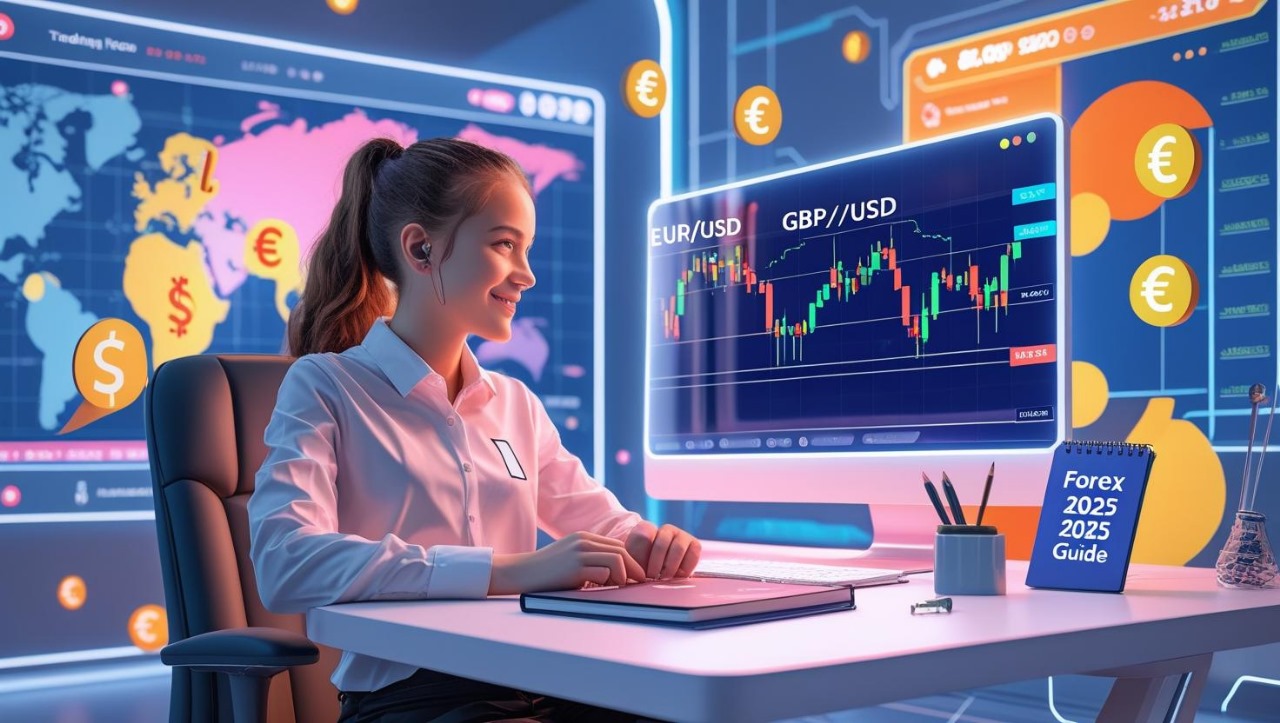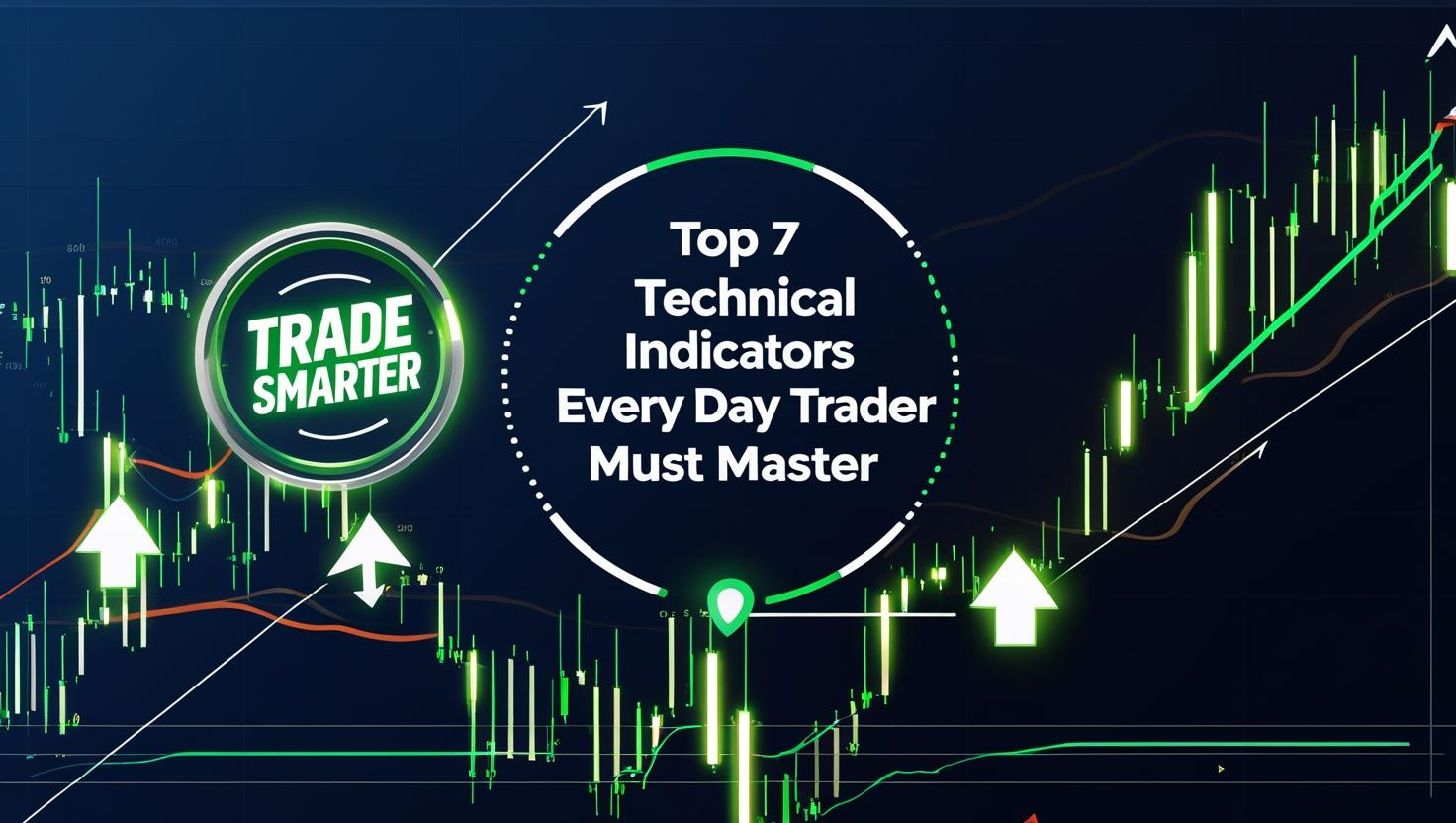Introduction to Forex Trading
-
What is Forex Trading?
Forex trading stands for foreign exchange of currencies, which involves the buying and selling of currencies. Think that you are exchanging your dollars for euros on an international trip; this type of forex trading is an individual trade. Now, envision doing this online, handling larger quantities, and ideally profiting from minor fluctuations in currency values.
Primarily, forex trading revolves around predicting whether one currency will rise or fall in value compared to another. If you expect that the euro will gain value against the dollar, you would purchase EUR/USD. Conversely, if you believe the euro will drop in value, you would sell it. The forex trading market is decentralized, meaning it does not function through a central exchange like the stock market. Instead, forex trading occurs over-the-counter (OTC) and is available around the clock, five days a week.
What makes forex trading attractive for beginners is its liquidity. With brokers providing options for micro and nano lots, you can begin trading with as little as $10 or $50 and still access the markets. Additionally, trading tools have become more user-friendly, incorporating AI and automation features that help even beginners make well-informed decisions.

Why Forex Remains Popular in 2025
In 2025, forex trading will be more accessible than ever. Thanks to technology, you can now trade directly from your smartphone with real-time market data, AI-backed trade recommendations, and social trading platforms where you copy trades from experienced professionals.
Also, the volatility in global economies, ongoing geopolitical developments, and fluctuating interest rates continue to present trading opportunities. Unlike other markets, forex is less affected by economic downturns — in fact, uncertainty often fuels trading activity. That makes it an ideal option for anyone looking to build an income stream in unpredictable times.
Forex trading also attracts people due to its liquidity. With over $7.5 trillion traded daily, you can enter and exit trades instantly — no waiting around for buyers or sellers. It’s a dynamic, fast-paced market where sharp minds can make quick decisions and potentially reap serious rewards.
Lastly, educational content is more available than ever. Free YouTube channels, online communities, Telegram groups, and webinars hosted by expert traders have created a learning ecosystem that supports new traders at every step.
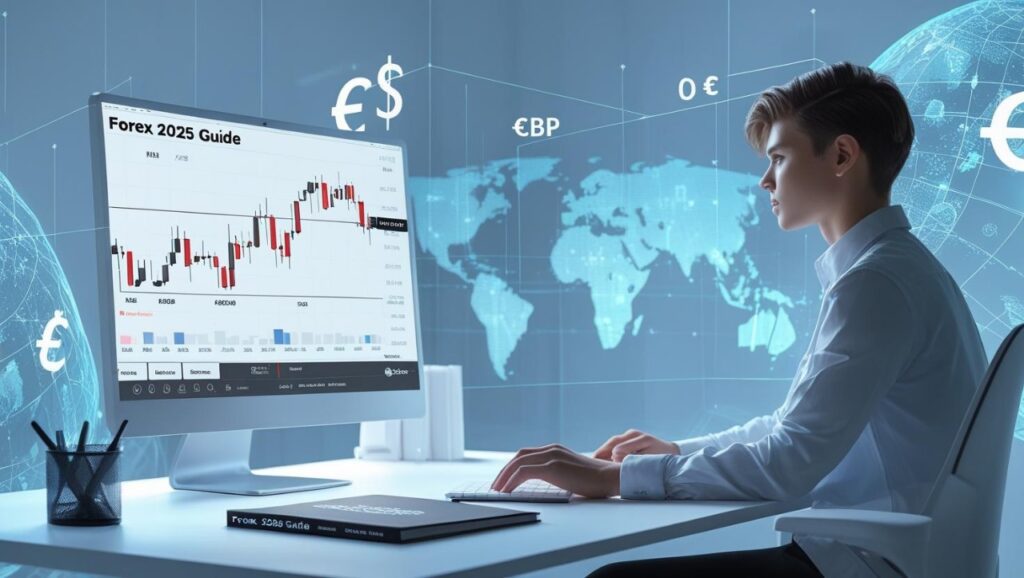
Understanding How the Forex Market Works
- Major Players in the Forex Market
The forex trading market may seem like a place for individual traders to earn quick money, but in reality, it’s dominated by huge players. Central banks like the Federal Reserve, European Central Bank, and Bank of Japan influence currency movements with interest rate decisions and monetary policy changes. Commercial banks, hedge funds, multinational corporations, and investment managers also make massive trades daily.
Retail traders — that includes beginners like you — make up a smaller percentage of the market. But thanks to leverage and modern platforms, your trades still matter and can be profitable. Understanding the big players is crucial because their actions move the market. For instance, when a central bank hints at raising interest rates, the national currency typically strengthens.
Knowing this helps you trade smarter. Rather than just looking at charts, start paying attention to who’s influencing the market and why. Is there a central bank meeting today? This kind of macro awareness gives you an edge over those who trade blindly.
Currency Pairs Explained
Forex trading is always traded in pairs — you’re selling one currency versus another. Think of it as a tug of war between two currencies. If one grows stronger, the other grows weaker in comparison.
Major, Minor, and Exotic Pairs
Major Pairs:
These are the currencies that are traded the most, such as EUR/USD, GBP/USD, and USD/JPY. They’ve become famous for tight spreads and high liquidity.
Exotic Pairs:
They include one major currency like USD/TRY
Minor pairs:
They don’t include the USD; they include EUR/GBP
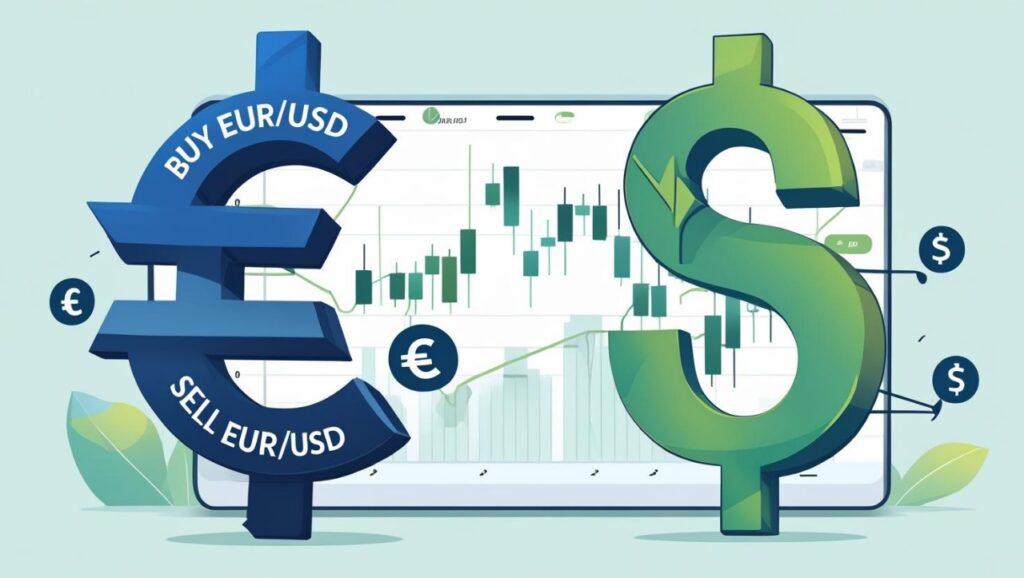
Base Currency vs. Quote Currency
Each pair has a base and a quote currency. In EUR/USD, the EUR is the base currency, and the USD is the quote. If the pair is trading at 1.1000, that means 1 euro equals 1.10 U.S. dollars. If the price goes up, the base currency has strengthened; if it goes down, it has weakened.
Understanding these basics helps you make accurate predictions
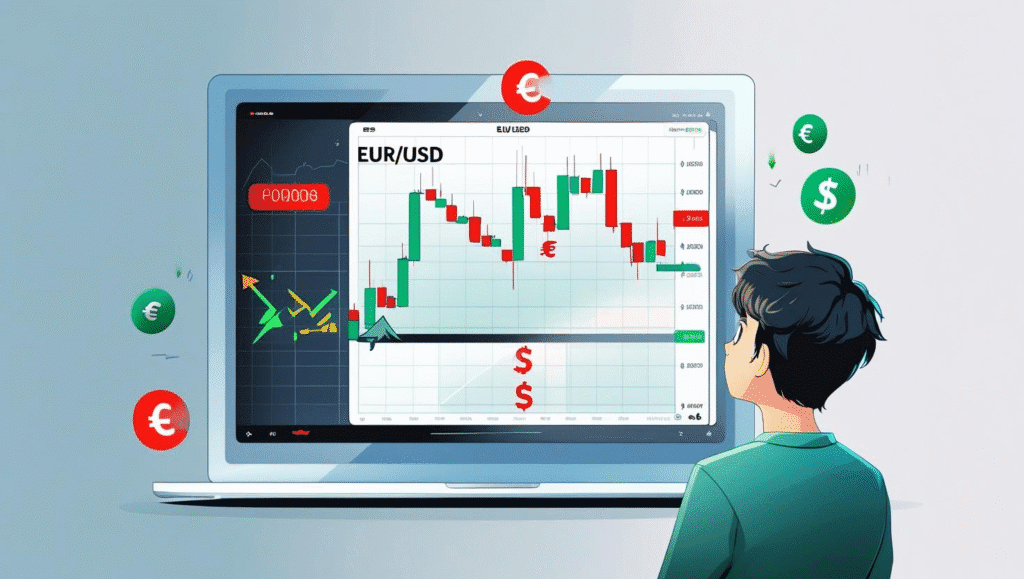
Essential Forex Terminology for Beginners
- If you are trying to trade in forex without knowing the basic terminologies of forex trading, then you are like a player who is entering the ground blindfolded. If you want to trade in forex trading and want to make your career in this market, you need to understand the basic terminology used in the forex trading market.
- You open the trade at a mini lot, which is 10,000 units of base currency, and again price moves up to 10 pips
- $10 per pip * 10 pips = $100 profit. One pip move is equal to $10Example: I have compiled a simple list of the most important terms used in trading that are essential for beginners to learn and apply when making their first trade.
Pips, Lots, Leverage.
Let’s start learning the basic words and phrases used in forex charts and tutorials.
- Pips
A pip, which is called a percentage in points, is the tiniest move in a currency price. It is the fourth number value in the currency price on the chart after the decimal. For example, if you are trading XAU/USD at 1.1000 and after some time price moves to 1.1001, that’s the one-pip move in the price.
Why study of pips important? The reason is that pips help you in figuring out how much you are losing and gaining. For example, if you are buying XAU/USD at 1.1000 and selling it at 1.1020, then you have made a profit of 20 pips. Multiply your profit by your trade size then you will see how much profit you have made.
- Lots
When you are trading in the forex market, you are not buying or selling one USD or GBP; you are dealing in lots. In layman’s language, a lot is involved in deciding the trade size. It’s simply a standard trading term used to describe the trade.
- Standard lot = 100,000 units of base currency
- Mini lot = 10,000 units of base currency
- Micro lot = 1,000 units of base currency
- Nano lot = 100 units of base currency
I know that you are a little bit confused about what is meant by this, and I know that there are a lot of questions coming to your mind related to this.
Let’s understand this by taking an example.
- Let‘s say you are trading ERU/USD.
You opened the trade at 1 lot size means that you are buying 100,000 euros.
If the price goes up by 10 pips, you earn.
- Let’s study how lots work.
-
- $1 per pip * 10 pips = $10 profit, one pip move is equal to $1
- Leverage.
In layman’s language, leverage in the forex market is opening a big door with a small key. What does it mean?
It’s borrowing money from your broker (a platform that is used by traders to make trades) so that you can trade a bigger amount than you have actual money in your account.
- You have $100 in your account
- Your broker provides you with the leverage of 1:100
- You can make the trade up to$ 10,000
- If you make a loss, it would be $100
- If you made a profit, then it would be $10,000
- $10 per pip * 10 pips = $100 profit. One pip move is equal to $10Example: I have compiled a simple list of the most important terms used in trading that are essential for beginners to learn and apply when making their first trade.
- Sounds good naw?
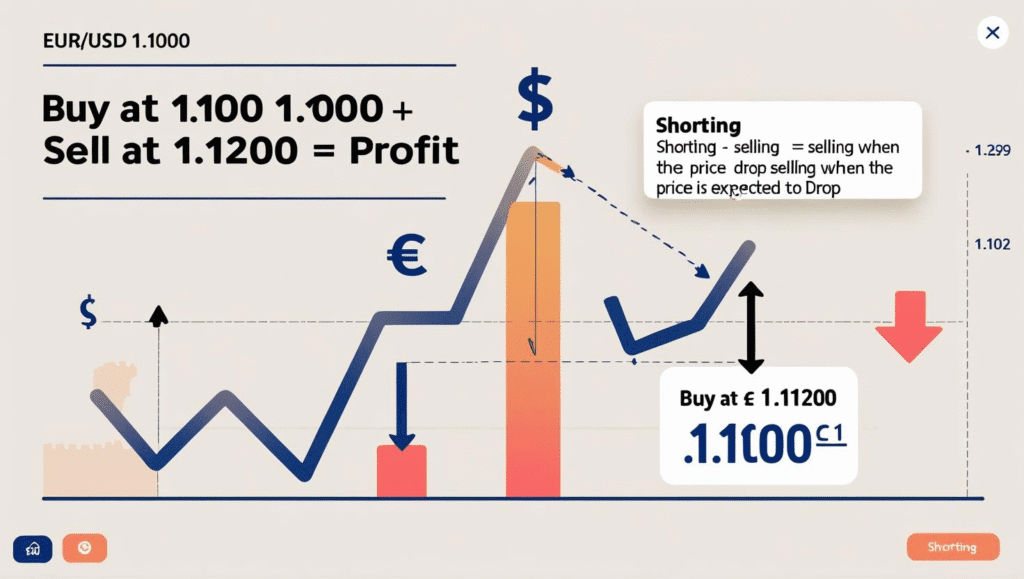
The Best Trading Platforms and Tools in 2025
Why is it important to pick the right platform? The reason is that your platform will be the tool throughout the journey, and that tool should be easy to use and understandable. Whether you are just starting your trading journey or want to become a pro in this field, your platform will decide your success.
In simple words, your trading platform is called a broker.
Always choose your broker wisely.. I am mentioning some of those that are easy to use, and I have also used them personally.
- MetaTrader 5 (MT5)
One of the most famous and widely used of all brokers is MT5, which is called MetaTrader 5. Why is it called 5? Because it also has many versions, like ChatGPT has for example, MT4, etc. This broker will allow you to trade with confidence it provides charting tools and technical indicators. I have also used it personally. Fully recommended if you are confused as a beginner.
- cTrader
It has qualities like being easy to use and fast execution speed. It’s a favourite among traders who love to trade frequently. One of its cool features is that it lets you follow and copy the trades of experienced traders in real time. So it would be good for beginners to follow the experienced traders in this way.
- AI-Based Platforms
As we all know that AI is replacing everything. There are a lot of AI trading platforms that help you trade effectively, for example. ZuluTrade, Capitalise, AI, and eToro. These AI-based platforms are taking the trade to the next level
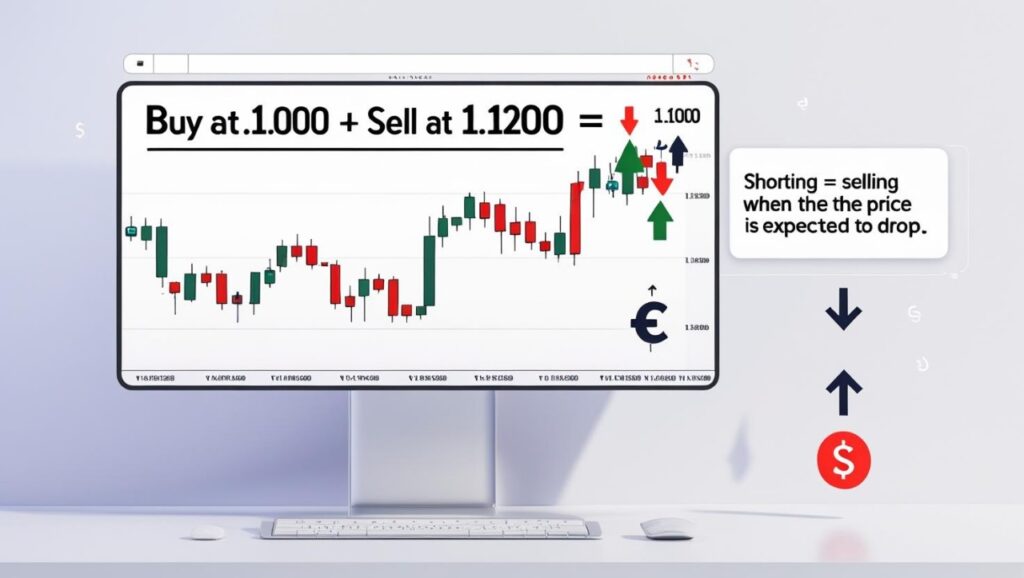
Psychology of Forex Trading
Let’s suppose that you have learned chart analysis strategies of trading, everything that is mandatory is done, but the real game changer in forex trading is your thoughts. Yes, your thoughts will let you either win or lose. Forex trading is not all about buying and selling most important thing is how you manage your fear, emotions, and greed.
Keep in mind some points while making your trade.
- Don’t be greedy
- Don’t panic
- Be patient
- Make a trade in a relaxed state
- Don’t trade with a busy and tired mind
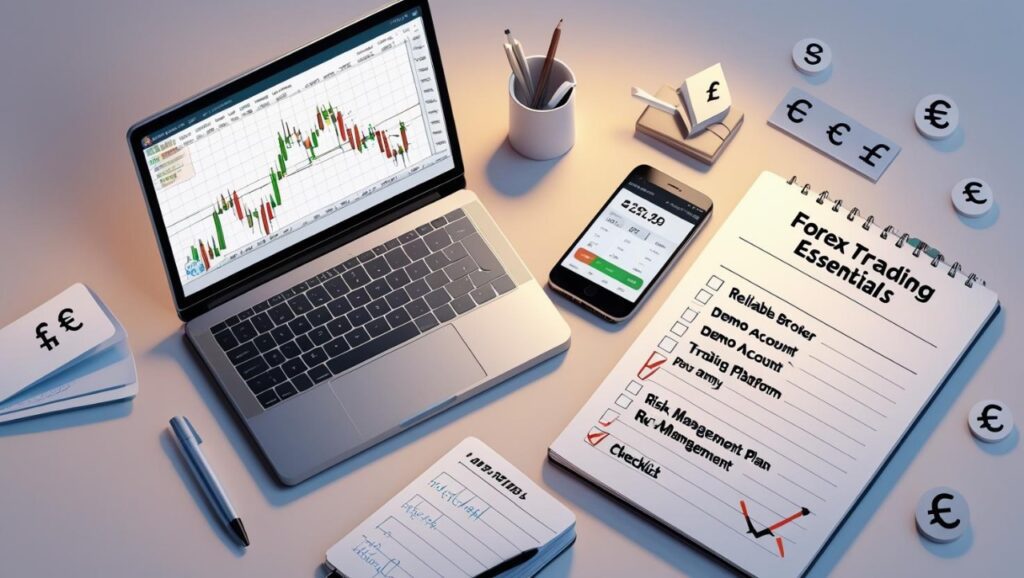
Some tools to keep in mind while making Trade
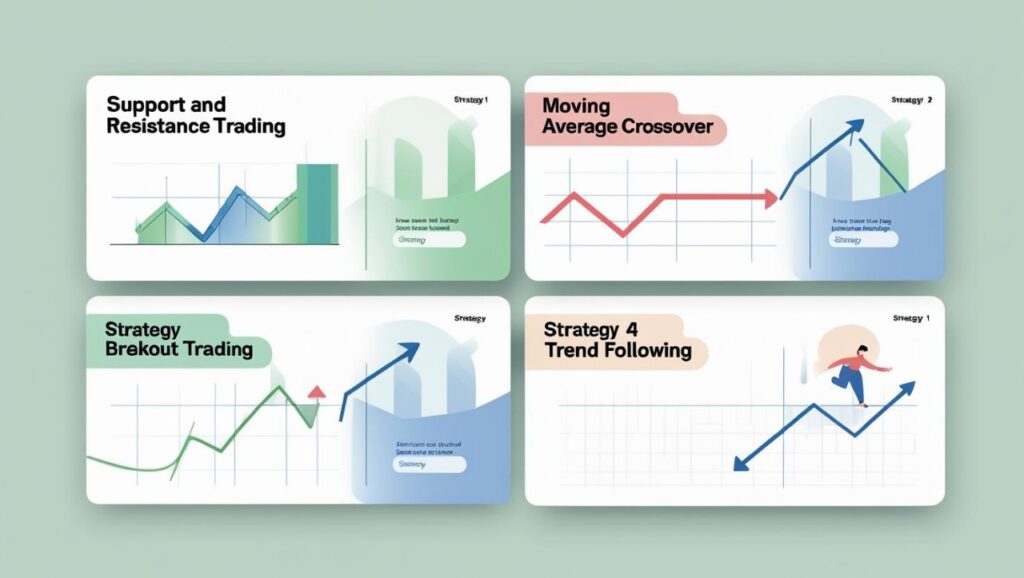
Conclusion
- So, there you have it, a beginner-friendly, no-fluff guide to trading forex in 2025. If you’ve made it this far, you’re already ahead of most people who dive into forex blindly without understanding the basics. Now you know what forex trading is, how the market works, the key terms that every trader should know, and how to choose the best platforms and tools for the job.
- The forex market can be thrilling, fast-paced, and yes, even profitable — but only if you approach it with the right mindset, strategy, and patience. This isn’t a get-rich-quick scheme. It’s a skill that rewards discipline, consistency, and constant learning.
- Remember, there’s no such thing as 100% winning trades. Losses will happen, and that’s normal. The key is to keep them small, manage your risk, and never let emotions run the show. Trading is as much about psychology and mindset as it is about charts and numbers.
- As a beginner, focus on learning and longevity. Don’t compare yourself to social media traders flashing their profits. Focus on your growth, your goals, and your strategy. With the right tools, the right habits, and the right mindset, you can absolutely become a confident, consistent forex trader in 2025 and beyond.
Your journey is just beginning — stay curious, stay disciplined, and never stop improving.
1. How much money do I need to start forex trading in 2025?
You can start with as little as $10–$100, thanks to micro and nano lot options and leverage offered by most brokers. However, starting with at least $500–$1,000 is more realistic if you want to grow consistently while managing risk properly.
2. Can I trade forex without prior experience?
Absolutely. With demo accounts, online tutorials, free courses, and copy trading platforms, you can learn everything step by step. Just make sure you practice before going live and never risk money you can’t afford to lose.
3. Is forex trading profitable for beginners?
Yes, but only with the right education, strategy, and risk management. Many beginners lose money because they rush in. Focus on slow growth, realistic goals, and building skill over time.
4. What are the safest forex strategies in 2025?
Some of the safest beginner-friendly strategies include:
-
Trend-following
-
Support and resistance trading
-
Swing trading
These are low-risk when paired with proper stop-loss and risk management.
.
You can start with as little as $10–$100, thanks to micro and nano lot options and the leverage offered by most brokers. However, starting with at least $500–$1,000 is more realistic if you want to grow consistently while managing risk properly.
Absolutely. With demo accounts, online tutorials, free courses, and copy trading platforms, you can learn everything step by step. Just make sure you practice before going live and never risk money you can’t afford to lose.
Yes, but only with the right education, strategy, and risk management. Many beginners lose money because they rush in. Focus on slow growth, realistic goals, and building skill over time.
Some of the safest beginner-friendly strategies include:
-
Trend-following
-
Support and resistance trading
-
Swing trading
These are low-risk when paired with proper stop-loss and risk management.
.
